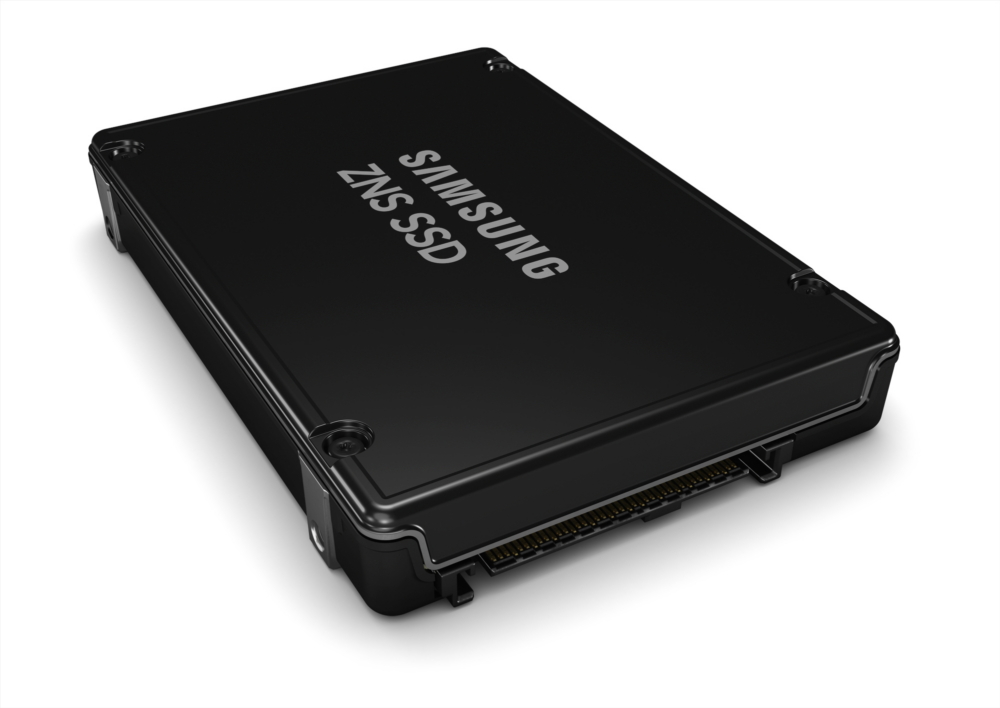Samsung unveils 'zoned namespace' SSDs for cloud and data centres
The ZNS storage units offer up to four times longer lifespan for systems running bit data and AI applications


Samsung has revealed a line of solid-state drives (SSDs) for data centres featuring the Zoned Namespace (ZNS) technology, which the firm claims can raise efficiency and extend the drive's lifespan.
Built on Samsung's sixth-generation vertical NAND (V-NAND) architecture, the 2.5in PM1731a will be sold in 2TB and 4GB models, with the SSD featuring dual ports to ensure that it's fully accessible for continuous operations.
This drive is designed for enterprises running heavy workloads and public cloud companies running data-intensive applications, with the ZNS SSDs boasting between a three and four times longer lifespan. This is in addition to greater efficiency versus standard SSDs, as well as reduced power consumption.
"Samsung's ZNS SSD reflects our commitment to introducing differentiated storage solutions that can substantially enhance the reliability and lifetime of server SSDs," said senior vice president of Samsung's Memory Software Development Team, Sangyeun Cho.
"We plan to leverage quad-level cell (QLC) NAND technology in our next-generation ZNS drives to enable higher thresholds for storage performance and capacity in the enterprise systems of tomorrow."
ZNS SSDs implement the Zoned Namespace Command Set as defined by the NVMe organisation. The specification provides a zoned storage device interface that allows the SSD and host to work together on allocating data so it can be aligned with the physical media of the SSD.
The first generation of this specification, ZNS Command Set 1.0, was released on 16 June 2020.
Get the ITPro daily newsletter
Sign up today and you will receive a free copy of our Future Focus 2025 report - the leading guidance on AI, cybersecurity and other IT challenges as per 700+ senior executives
Samsung suggests that ZNS technology allows data to be grouped based on usage and how often they're accessed, stored in independent zones within the drive. This means there's no need to move and rearrange data, leading to a significant reduction in the number of write operations.
The PM1731a series will be more sustainable, as a result, and allows users to take advantage of the full drive capacity by eliminating the need to reserve some storage space for background tasks.
RELATED RESOURCE

The secure cloud configuration imperative
The central role of cloud security posture management
Samsung has also been engaging in various open source projects to expand the ZNS ecosystem, making its ZNS technology available to xNVMe, for example, which provides software libraries and tools to improve the performance of NVMe devices.
The firm has also joined the Storage Performance Development Kit (SPDK) community created by Intel, which allows SPDK users to implement ZNS drives more easily.
Samsung plans to mass-produce ZNS SSDs in the second half of the year and continue its work with storage companies to implement ZNS drives across customer environments.

Keumars Afifi-Sabet is a writer and editor that specialises in public sector, cyber security, and cloud computing. He first joined ITPro as a staff writer in April 2018 and eventually became its Features Editor. Although a regular contributor to other tech sites in the past, these days you will find Keumars on LiveScience, where he runs its Technology section.
-
 Bigger salaries, more burnout: Is the CISO role in crisis?
Bigger salaries, more burnout: Is the CISO role in crisis?In-depth CISOs are more stressed than ever before – but why is this and what can be done?
By Kate O'Flaherty Published
-
 Cheap cyber crime kits can be bought on the dark web for less than $25
Cheap cyber crime kits can be bought on the dark web for less than $25News Research from NordVPN shows phishing kits are now widely available on the dark web and via messaging apps like Telegram, and are often selling for less than $25.
By Emma Woollacott Published